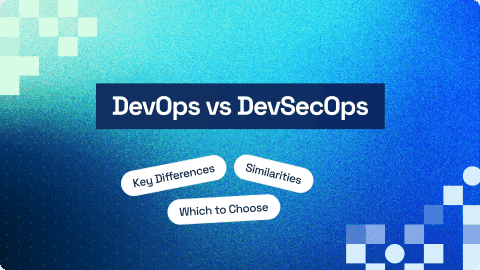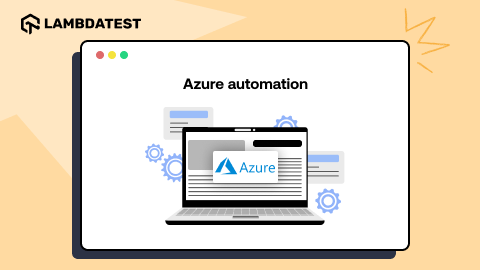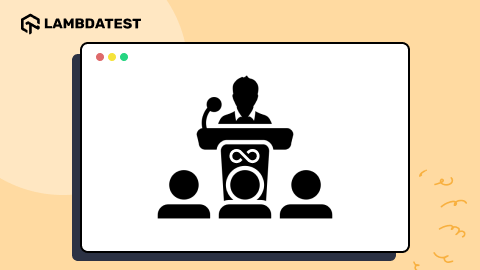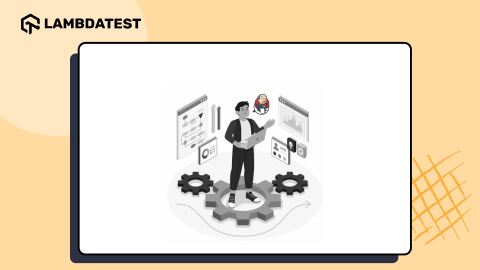10 Top CI/CD Pipeline Challenges And Solutions [2025]
Nishant Choudhary
Posted On: March 12, 2025
14 Min
CI/CD pipelines have become the mainstream approach to software development across the entire IT sector. There’s no doubt that CI/CD pipeline tools have matured a lot over the years.Yet, developers, QA engineers, and leaders are still posed with some challenges and roadblocks in adopting and efficiently implementing CI/CD tools.
Overview
Implementing CI/CD pipelines streamlines build, test, and deployment workflows but teams often face challenges related to culture, automation, security, and scalability. Below are the most common CI/CD challenges and how to solve them effectively.
1. Cultural Resistance and Skill Gaps
Challenge: Many teams struggle to adapt to continuous delivery due to traditional workflows or lack of DevOps expertise.
Solution: Build a collaborative DevOps culture with shared responsibility between developers, testers, and operations. Provide regular training to bridge skill gaps and encourage automation-first practices.
2. Automation and Testing Bottlenecks
Challenge: Inefficient or poorly configured automation leads to long feedback cycles and unreliable releases.
Solution: Standardize test automation frameworks and enable parallel execution to speed up validation. Using cloud platforms like LambdaTest helps run tests simultaneously across 3,000+ browsers and devices with zero setup time.
3. Environment Inconsistency
Challenge: Differences between development, staging, and production environments can cause test flakiness and deployment failures.
Solution: Use infrastructure-as-code (IaC) to create consistent environments and integrate containerization tools like Docker to replicate production setups during testing.
4. Security Vulnerabilities in Pipelines
Challenge: Insecure dependencies, weak access control, or missing scans in CI/CD pipelines increase exposure to threats.
Solution: Shift security left by embedding vulnerability scanning, static code analysis, and secret detection into early pipeline stages. Adopt DevSecOps principles to make security continuous.
5. Performance and Scalability Issues
Challenge: Resource-heavy builds, slow test runs, or limited infrastructure often slow down pipelines.
Solution: Optimize build caching, use lightweight containers, and scale test execution on cloud platforms for faster and more efficient pipelines.
6. Toolchain Fragmentation and Maintenance Overhead
Challenge: Managing multiple CI/CD tools and integrations increases complexity and setup time.
Solution: Use centralized CI/CD solutions and integrate them with a unified testing cloud like LambdaTest to simplify management, enable smarter debugging, and improve visibility.
This article highlights the top 10 CI/CD challenges that people face during implementation, and we will also discuss their potential solutions. If you are preparing for an interview you can learn more through CI/CD Interview Questions.
Let’s get started with the basics!
Chapters
- What is Continuous Integration and Continuous Delivery
- What Is CI/CD Testing
- Building a QA Pipeline Within CI/CD
- CI/CD in Automation Testing
- Best Practices
- Challenges and Solutions
- Top CI/CD Tools
- DevOps vs CI/CD
- Jenkins vs GoCD
- Bamboo vs Jenkins
- CircleCI vs Jenkins
- CircleCI vs GitLab
- Travis CI vs CircleCI
- Jenkins vs GitLab CI
- Building Pipeline With Bamboo
- Building Pipeline With TeamCity
- Building Pipelines With Azure DevOps
- Building Pipeline With Travis CI, Docker, and LambdaTest
- What Is A CI/CD Pipeline?
- What Is Continuous Integration?
- What Is Continuous Delivery?
- What Is Continuous Deployment?
- What Is Continuous Testing?
- Common CI/CD Challenges (Including Continuous Deployment Challenges).
- Limited Environment Challenges
- Ownership-Based CI/CD Challenges
- Implementing Multiple CI/CD Pipelines For Large Scale Projects
- Integrating Security Tools
- Coordination-Based CI/CD Challenges
- Cost & Resource Management
- Implementing CI/CD Into Ongoing Projects & Workflows
- Training, Cultural & Other Internal Resistance
- Inefficient Implementation Of CI/CD Pipelines
- Continuous Testing & Optimization
- How LambdaTest’s Integration In Your Pipeline Will Resolve CI/CD Challenges?
What Is A CI/CD Pipeline?
Traditionally, the software was developed using waterfall methodology but recently, agile and lean have started dominating the software development space. Today, DevOps practices play a crucial role in enabling this agile software development approach.
To learn more about DevOps and Agile methodologies follow this guide on Agile Vs waterfall methodology comparison.
Continuous integration & continuous delivery, i.e., CI/CD pipeline tools, technologies, and stages, are the pillars on which DevOps culture is architected. These are tools and technologies that eliminate the need to manually integrate different dependencies or manually test the code-base for security & design loopholes. CI/CD approach instead automates the entire operations process from integration to delivery, testing, and deployment.
What Is Continuous Integration?
Continuous Integration (CI) is the kickoff step of CI/CD pipeline stages.
What does that mean?
When software is developed iteratively, development teams frequently code, build, test, release, and deploy features. Continuous Integration is all about automating this process by setting up a script-led mechanism to detect a change in the shared code repository automatically. Changes can be detected using polling, periodic monitoring, or using a push-out mechanism like webhooks.
As soon as the change is detected, your CI solution automatically pulls up a copy of your updated code, builds it, carries out unit testing, and performs dependency compatibility checks to detect code loopholes at an early stage.
Continuous Integration (CI) can be implemented using open source tools like Jenkins or Continuous Integration SaaS services like Gitlab CI, Circle CI, or Codeship.
What Is Continuous Delivery?
Continuous Delivery (CD) stage of the CI/CD pipeline augments the benefits of continuous integration (CI) by expanding the scope of automation testing beyond unit testing. Testing is not an inherent part of continuous integration. Still, DevOps teams prefer practicing unit testing at the integration level to identify code bugs and make the application more robust. Continuous delivery incorporates automated load testing, API testing, integration testing, etc., besides unit testing.
The pulse of Continuous Delivery lies in automating the entire software release cycle by triggering automated flows for building, testing, and staging code updates as soon as it surpasses continuous integration (CI). The CI/CD pipeline’s direct benefits are in pushing validated, secure, robust, and deployment-ready applications at a faster pace to the staging or pre-production environment.
What Is Continuous Deployment?
Continuous Deployment (CD) further expands the scope of continuous integration and continuous delivery. Continuous deployment is the final stage in a CI/CD pipeline process. Continuous deployment is a test-driven approach to validate the application on different parameters and automatically roll out deployments.
A robust continuous deployment implementation incorporates continuous monitoring and alert features to automatically transition back to previous versions of deployment if any issue arises. There are also certain continuous deployment challenges that need to be addressed carefully. We will discuss these issues later in the next sections.
What Is Continuous Testing?
Be it integration, delivery, or deployment – testing has been an integral part of all the CI/CD pipeline stages. Continuous testing is an approach to automate the application testing process and embed it into the CI/CD pipeline to achieve greater agility.
Different types of automated testing can and should be implemented at different CI/CD pipeline stages, making it easier to overcome CI/CD challenges. For instance, unit testing is more suited at the continuous integration stage of the CI/CD pipeline. Unit testing at this stage typically involves testing and validating code in isolation, i.e., independent of any other code. Integration testing, functional testing, and acceptance testing could be part of the continuous delivery and continuous deployment stage of the CI/CD pipeline.
Common CI/CD Challenges (Including Continuous Deployment Challenges)
Adhering to the CI/CD approach of agile software development is not always a cake-walk. Having understood the CI/CD pipeline terminologies and overall flow in detail, let’s now acquaint ourselves with some common CI/CD challenges –
1. Limited Environment Challenges
Software development teams, especially testers, often get only limited infrastructure resources to test their code. In such scenarios, teams tend to incline towards a shared testing environment.
Shared testing environments are not always that smooth an experience with CI/CD pipeline. There are a lot of continuous deployment challenges associated with it. Several developers and teams (if the project is way too large) are concurrently committing code to the same CI environment. Sometimes, several parallel testing are in process. This could branch into environment configuration issues as different tests might need different environment configurations.
In fact, more than often, the poor configuration of the shared testing environment translates into failed tests & failed deployments in-turn. This dilutes the very purpose of the CI/CD approach, i.e., faster iterative development.
A solution to this could be on-demand or on-need-basis dedicated testing environment creation in the cloud. LambdaTest Selenium automation testing features could bring relief to testing teams facing CI/CD challenges like limited testing environments or inefficient implementation.
2. Ownership-Based CI/CD Challenges
Often bugs and code errors are identified at a later stage of the DevOps release cycle. Sometimes, CI/CD pipeline even fails or breaks down due to these bugs. Failing pipelines are normal. It is designed to break if all the code is not integrable and if the code is not securely performing its intended functions.
But poor CI/CD pipeline implementation often makes it a cumbersome task to identify failure cause immediately. This, in turn, makes it harder to redirect to the concerned teams for fixing code errors.
A quick fix to this CI/CD challenge is to ensure that code and test-cases are written with easily identifiable logging capabilities. Assign ownership roles to individuals or teams for each stage of the CI/CD pipeline. Based on the failure log analysis, these individuals will be responsible for figuring out the failure cause, identifying, and redirecting the team responsible for fixing the continuous deployment challenge.
3. Implementing Multiple CI/CD Pipelines For Large Scale Projects
In big enterprises, several large scale projects are parallelly under development and maintenance. And multiple development teams are incrementally committing changes to the respective code repositories. So if issues get introduced in the commit, compile, build, test, deliver, deploy cycle, it is often tough to analyze it and get to the root cause.
This is one of the major CI/CD challenges when it comes to enterprise-level organizations. As a solution, teams can have standard CI/CD pipeline templates across the organization and break down complex, massive projects into smaller modules. This enables meaningful reporting and fastens up feedback cycles for improving code and fixing issues.
4. Integrating Security Tools
Security tests like static application security testing (SAST), software composition analysis (SCA), and dynamic application security testing (DAST) can be deployed at different stages of the CI/CD pipeline based on need.
SAST and SCA ensure security testing at the CI stage, handling pre-commit checks and incremental tests at the commit and build stages of the pipeline. Meanwhile, DAST and interactive application security testing (IAST) focus on fuzz testing, penetration testing, and system hardening.
One key security challenge in CI/CD workflows is inefficient security implementation, which can lead to misleading information such as false positives. These issues can be mitigated by selecting security testing tools that integrate effectively with existing CI/CD processes.
To improve security, tools should be configured to:
- Automatically update the defect tracking system
- Break the build if crucial security threats are detected
- Update the metrics monitoring dashboard
By implementing these measures, teams can respond quickly to identified threats, strengthening security while maintaining a smooth continuous deployment process.
5. Coordination-Based CI/CD Challenges
CI and CD are often implemented separately by teams, and the tools and processes need to be compatible with incremental feedback-led processes.
Apart from tools in the continuously iterative development, poor communication across business and product teams also leads to delayed-release and deployment cycles. One of the big benefits of the CI/CD pipeline is accelerated delivery and deployment cycle, but lack of coordination fails the use-case. In large projects, companies have critical data and software in databases and on servers.
When the build or test-cases fail, teams responsible for addressing failed builds don’t have access to these critical resources for obvious security reasons. But these challenges can be addressed with proper coordination among teams and automated processes.
6. Cost & Resource Management
Implementing CI/CD across the organization has long-term benefits in business agility, product robustness, security, and feature release cycle, but it also has associated costs. The resources, tools, and infrastructure requirements significantly add up to the project costs.
Besides, everyone has their own preference for tools and other resources as per their convenience. Also, adopting CI/CD doesn’t always mean better agility. It can potentially slow down processes and deter dev productivity if proper guidance and training are not available to developers and executives.
7. Implementing CI/CD Into Ongoing Projects & Workflows
Going agile, adopting, and implementing CI/CD pipelines to existing workflows and projects is not an easy task either. Especially in large scale legacy projects and workflows, changes to any part might need changes across several other processes and workflows.
This inevitably requires extreme caution, in-depth knowledge, and rich experience with CI/CD tools as the stakes in terms of costs, latency, and quality are quite high.
Companies and teams should impartially evaluate if they really need CI/CD and if it would augment their processes and development approach. If the answer is yes, they should evaluate feasibility too in terms of costs and infrastructure resources.
8. Training, Cultural & Other Internal Resistance
Developers normally don’t enjoy doing operations tasks, but in CI/CD approach, developers often need to intervene and get involved with configuring VMs and other environments.
As CI/CD tools are relatively new in the market, there is not much expertise and training available, which again is a challenge as poor CI/CD implementation would add up costs and risks.
Also, companies face internal resistance from developers, team leads, and other project stakeholders as implementing CI/CD is a new approach for them and pushes them out of their comfort zone.
9. Inefficient Implementation Of CI/CD Pipelines
Lack of expertise, poor training, and several other challenges could lead to the inefficient implementation of CI/CD pipelines. Teams are seen automating wrong processes, writing flawed test cases, configuring CI in a wrong way, and even mistaking between continuous delivery approach and continuous deployment concept.
For instance, automated deployment need not be triggered with each successful delivery because there can be several commits a day. You cannot release 10 versions of a product for users on the same day or even over weeks. This is another major continuous deployment challenge that needs to be resolved at the earliest. The delivery stage is to always be in a deployment-ready state. The deployment stage is more of a business decision.
10. Continuous Testing & Optimization
Poorly written unit tests and acceptance tests could be a bottleneck to feedback-led iterative software development. However, it is more of the testing team’s internal problems rather than CI/CD challenges. But solely focusing on functional tests is a bad continuous testing practice for CI/CD pipelines. Test cases should also be written for non-functional requirements like performance measuring & reliability tests.
Performance features could be very critical in banking and healthcare applications. Writing test cases for performance tests & reliability tests are not as straightforward as testing functional requirements. These also need large testing environments to test application scalability, reliability, and various test-failure scenarios.
Learn how to perform testing using CI/CD follow this guide on CI/CD testing and get valuable insights.
How LambdaTest’s Integration In Your Pipeline Will Resolve CI/CD Challenges?
LambdaTest is an AI-Native test orchestration and execution platform that lets you run manual and automated tests at scale with over 5000+ real devices, browsers and OS combinations. It enables you to interactively test your web and mobile applications on all major browsers for different mobile operating systems like Android, iOS, and desktop environments like Mac, Windows, etc.
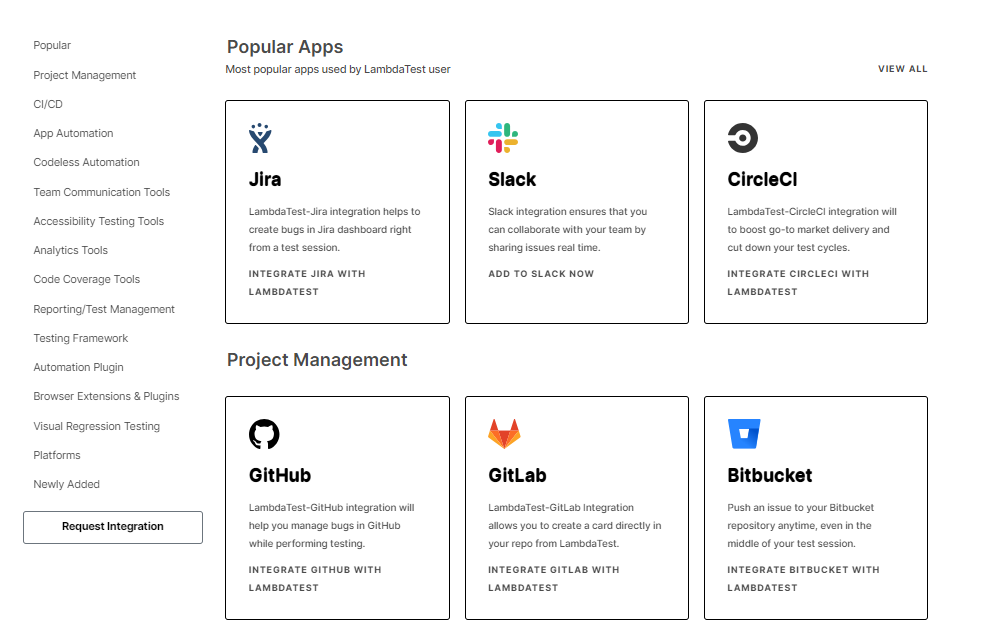
LambdaTest provides you out-of-the-box automated testing solutions to easily integrate with a suite of applications, from bug logging to project management tools & dashboards. Also, as already mentioned, LambdaTest integrates with CI tools of your choice to make automated testing a seamless experience for you.
One of the best ways to overcome the most common CI/CD challenges is using cloud-based automation testing platforms that allow easy integration with CI/CD tools. For example, LambdaTest offers you a suite of automation testing services in the cloud to test your software across 5000+ browsers & devices using a cloud Selenium Grid.
That Is All!
To conclude, most of the CI/CD challenges are related to poor practices and poor implementation. Properly evaluating CI/CD requirements and choosing the right tools, correctly configuring CI/CD pipeline stages, and rightly training the concerned professionals will lead to a successful CI/CD implementation. So you as an organization could focus more on shipping features than on controlling operations.
Author





